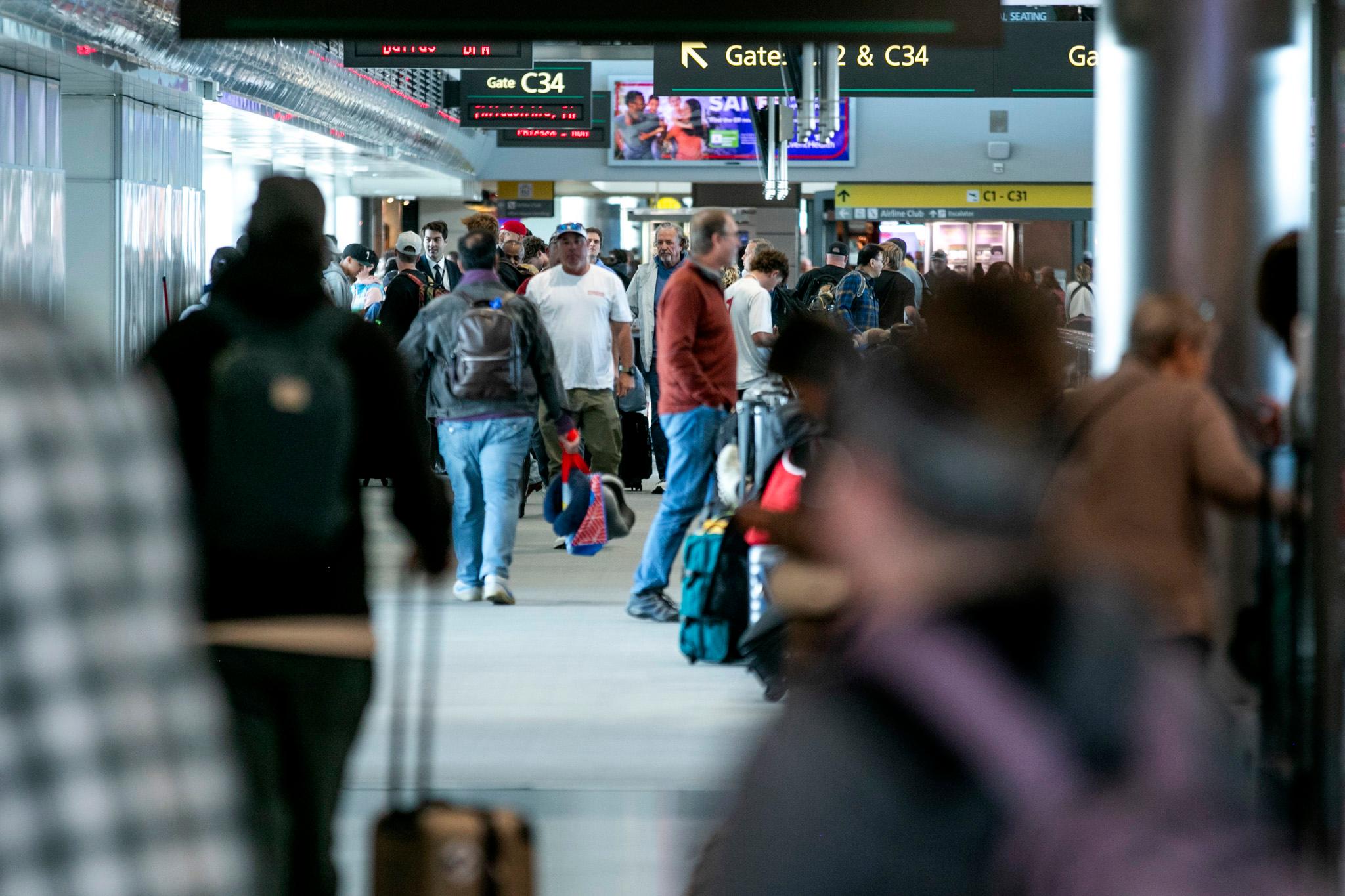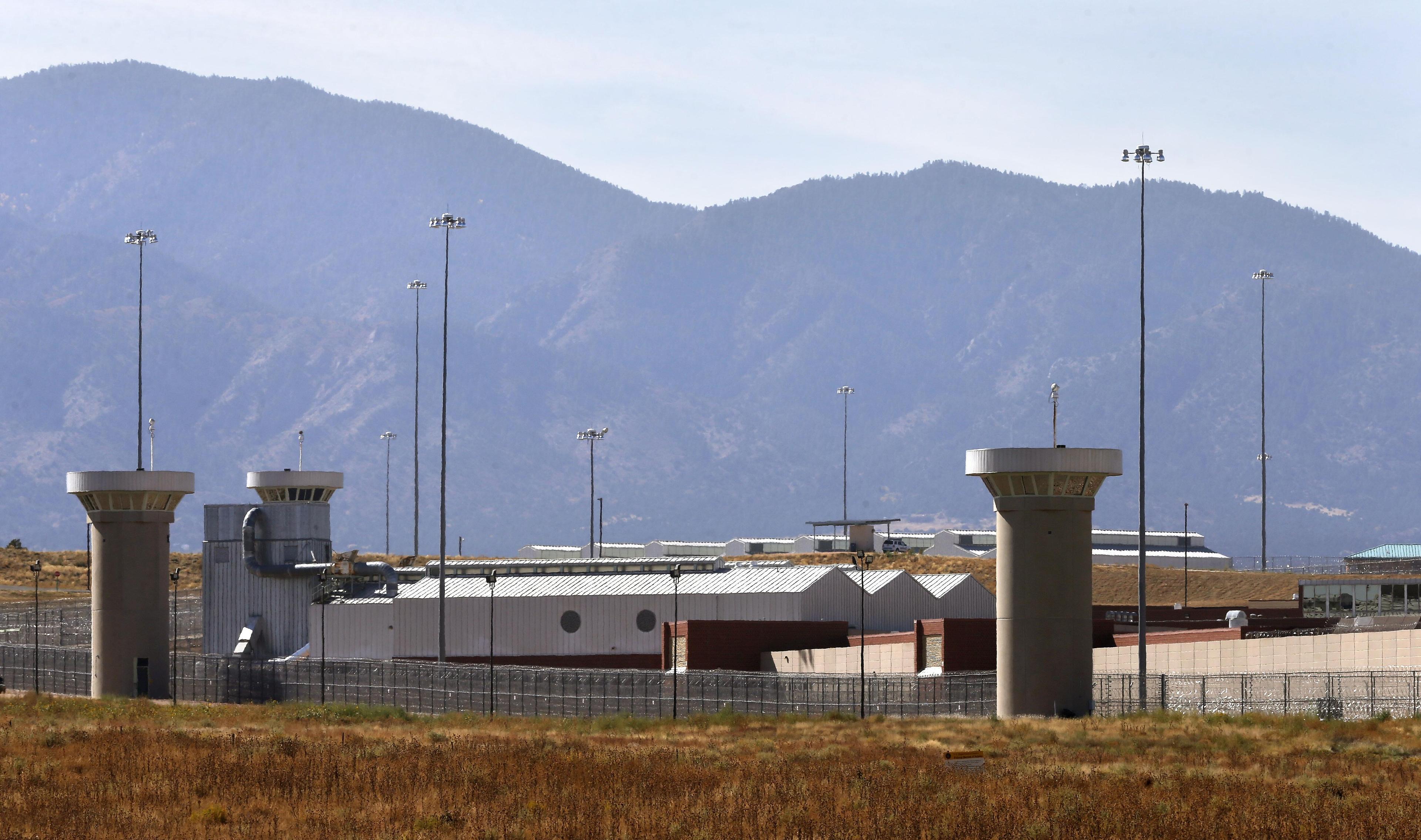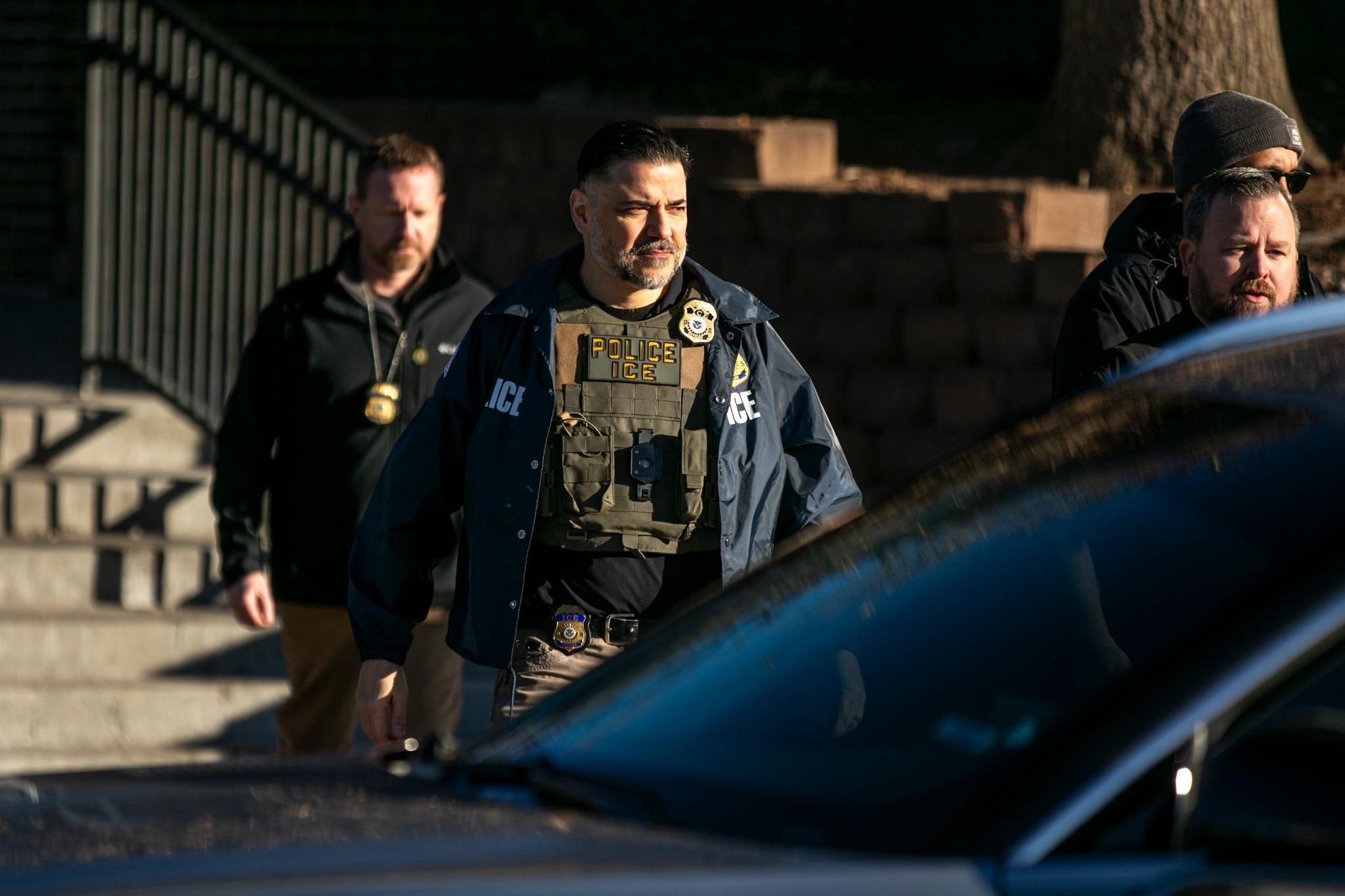
In June, Immigration and Customs Enforcement officials made an eye-popping claim about the dangers faced by officers as they increased detentions and patrols across the United States.
“Our officers are facing a 413 percent increase in assaults against them as they put their lives on the line to arrest murders (sic), rapists and gang members,” Homeland Security Assistant Secretary for Public Affairs Tricia McLaughlin said in a news release after a man was charged with punching a Customs and Border Protection officer in Los Angeles. “If you lay a hand on a law enforcement officer, you will be prosecuted to the fullest extent of the law.”
Then, as cities and states began to question the tactics used by ICE agents to conceal their identities with masks and street clothes while conducting rapid smash-and-grab operations to detain immigrants, the number of assaults ICE claimed were being endured by agents nationwide escalated at an astonishing rate.

A week after the 413 percent increase claim, ICE said assaults on agents had now jumped 500 percent, according to Homeland Security. By July 8, it was up 700 percent. A week later, it was 830 percent.
By early August, the head of ICE said in a television interview that the number of assaults on ICE officers had recently gone up more than “1,000” percent. ICE and Homeland Security officials never made clear what they were comparing it to in the past, and released no data to support the big numbers. Just last week, President Donald Trump said in an executive order that the 1,000 percent increase was as compared to the same period a year ago.
This week, U.S. Attorney General Pam Bondi relied on the same 1,000 percent claim in a memo ordering the deployment of additional federal agents to Portland, Ore. and Chicago to “defend ICE facilities.”
Once again, no data was provided, but after nudging the claim to 1,000 percent through the summer, ICE stuck with it into October.
“A lot of people don’t truly take the time to understand the law enforcement mission that we do and the significant public safety threats that are out there,” said Todd Lyons, the acting ICE director. “It’s one of the things that’s keeping me up at night … the threats are real.”
There is no question that ICE agents have faced increasingly dangerous work conditions and assaults around the nation, including some that could have turned deadly.
Fifteen people were charged this summer after what authorities called a July 4 plot to lure ICE agents out of a Texas detention center where they were then fired upon. A civilian police officer was wounded. In other cases, criminal affidavits show that Customs and Border Protection officers have been punched on patrol. Another ICE agent in California said he was dragged by a car. In Omaha, an ICE agent was slammed to the ground during an arrest and had to be hospitalized. Last week, a sniper opened fire on an ICE detention center in Texas, killing two detainees, though federal officials believe immigration agents were his target.
But despite repeated requests from CPR News for data underlying the claims of a massive jump in assaults justifying the use of masks, concealed identities and a surge of federal law enforcement in American cities, ICE and Homeland Security representatives have produced nothing but a handful of anecdotes. And while the agency promises that every person who assaults an ICE agent “will face the full extent of the law,” a CPR News examination of federal court records found that the number of federal cases has risen, but at nowhere near the rate claimed by the agencies.
President Trump has readily acknowledged his penchant for exaggeration over the years. As far back as 1987, he called it “truthful hyperbole” in his book, “The Art of the Deal.”
But when law enforcement officers engage in hype or make outright misleading statements, it jeopardizes trust in that system, said former FBI agent and leader Bob Pence.
Pence, who now lives in Littleton, served in various roles in the Bureau from 1962 to 1992, ending his career as Special Agent in Charge of the Rocky Mountain region. He then wrote a book published in 2020, “My Non-Political FBI: From Hoover to a Violent America.”
Pence noted that even something as minor as exaggerating claims of assault on ICE officers has a cost.
“There are a number of ramifications if the public can’t believe what law enforcement is saying; then law enforcement probably can’t depend on the cooperation of citizens to report information to them accurately,” Pence said. “They won’t make calls to law enforcement. If they’re asked, they may rationalize and say, well if they’re not capable of telling the truth, then I don’t need to tell the truth about this anyway.”
National data shows that charges of assault against federal officers have risen 25 percent so far in 2025 through mid-September compared to the same period a year ago, according to the federal courts database.
All of these events coincide with a sharp increase in the number of enforcement actions, as ICE is under pressure to find and remove millions from the country. But those operations are cloaked in secrecy — including who they are detaining, how many they’re detaining, how they are detaining them, and even sometimes where they take them — making it impossible to track their frequency in order to calculate a rate of assaults per federal enforcement action.
In Colorado, in the last decade, there have been five cases filed in federal court for assault on immigration agents, one in 2017 and four since Trump took office this year. One of those has already been dismissed. A second, which was heard in federal court Thursday, could meet the same fate, illustrating the complexities at the intersection of immigration law and criminal law.
In that case, agents detained the immigrant, Alejandro Guereca-Lizarraga, on July 25 at the Falcon Meadows Campground. They allege that he was initially compliant, but began to resist arrest after learning they were immigration officers. An agent said Guereca-Lizarraga kicked him, despite having his hands and feet shackled, and then spat at an agent at the detention facility.
A federal magistrate ruled Thursday there was probable cause for the case to proceed to trial. But the man’s public defender said she expected him to be deported as soon as next week, which would prompt dismissal of the case.
Another Colorado case involved a truck hitting an agent’s vehicle in Denver, while they were in it, according to the agents. Another case includes no details, but allegedly occurred last month.
Nationwide, charges of assault on all federal officers across all agencies didn’t start to rise until recently.
In the last three months, case filings of assaults on all officers nationwide have jumped 74 percent from the previous quarter. Most of that increase can be attributed to unrest in Los Angeles, where ICE has engaged in large-scale enforcement operations since June.
Those incidents have led to protests throughout that city. But those cases, and others nationally, have also provided indications that the public broadly is beginning to question the credibility of some of the federal government’s claims.
A man in Washington, D.C., in August threw a ham sandwich at a Customs and Border Protection agent and was charged with assaulting a federal officer. But prosecutors, a couple of weeks later, failed to get a grand jury to indict the man. In Los Angeles, federal prosecutors attempted to get felony indictments against at least 38 people involved in those protests and civil unrest or near immigration raids, but were successful in persuading citizens to indict their neighbors just seven times, according to local reporting. Other charges were dismissed, reduced to misdemeanors or resolved by plea deals.
Grand juries need to find only that there is probable cause that a crime was committed for a case to go to trial. Winning convictions by proving a case “beyond a reasonable doubt” is an even higher standard.
But even when including the cases reduced to misdemeanors, the number of actual charges filed across the country is small. For Homeland Security and ICE claims of a 1,000 percent increase in assaults to be true, there would also have to be thousands of other assaults that did not result in criminal charges, despite the government's claim that all assaults on federal agents will be prosecuted.
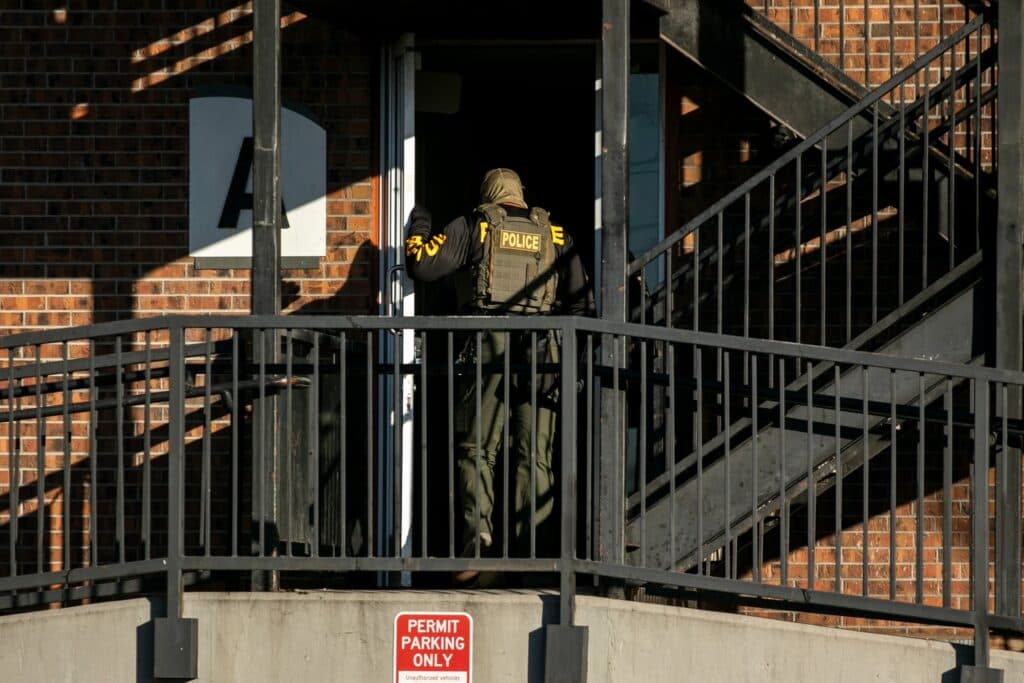
Scott Mechkowski, a former Deputy Field Office Director for ICE in New York City, said the court filings will never fully reflect the frequency of assaults on immigration agents.
“The way it's presented and prosecuted in federal court is different for us,” he said. “Like we were told — most of the time our guys got bit or they got punched — and we were told (by federal prosecutors) that's part of the job.”
Mechkowski said the only people who truly collect the number of assaults on ICE officers is ICE.
But CPR News' requests for any data kept by that agency were denied, with a spokesperson for the Department of Homeland Security declining to cite where they got the data or even how they arrived at a 1,000 percent increase when announcing it in August. They did send one email with six links to old press releases, again citing a 1,000 percent increase in assaults without explanation. Later, DHS sent an email with press releases for 12 cases of assault on agents.
A spokesman for ICE in Colorado declined multiple requests for comment on specific cases of assault on agents this year.
Assaults on local police in Colorado have stayed relatively flat from year to year from 2022 to today, though some departments, like Aurora, have experienced an increase.
Officers there are assaulted dozens of times a year. In 2024, there were 130 assaults on Aurora officers — up from 98 in 2023 — a 33 percent increase, according to the Colorado Bureau of Investigation.
“It certainly seems more common today than it was in the past. I don’t disagree with the general notion that the job of a law enforcement officer today is much, much tougher than it has in the past and that’s largely because of a greater willingness for people to resist law enforcement or actively assault them,” said John Suthers, a former state attorney general, U.S. attorney and mayor of Colorado Springs. “I think the notion that law enforcement is trying to convey is correct."
But unlike local police in Colorado, federal immigration agents don’t wear body cameras, and it’s often their word against an alleged assailant. Mechkowski, the former ICE supervisor, said he wished he had had body cameras when he was working enforcement, because it would exonerate him of any wrongdoing.
“I would win 100 times out of 100 on my arrests. I was never mean to anybody. You know what I mean? I never used force that wasn't necessary.”
Even in cases where video clearly shows an assault — though perhaps not as dramatically as ICE claims — it is no guarantee that the case will result in a conviction.
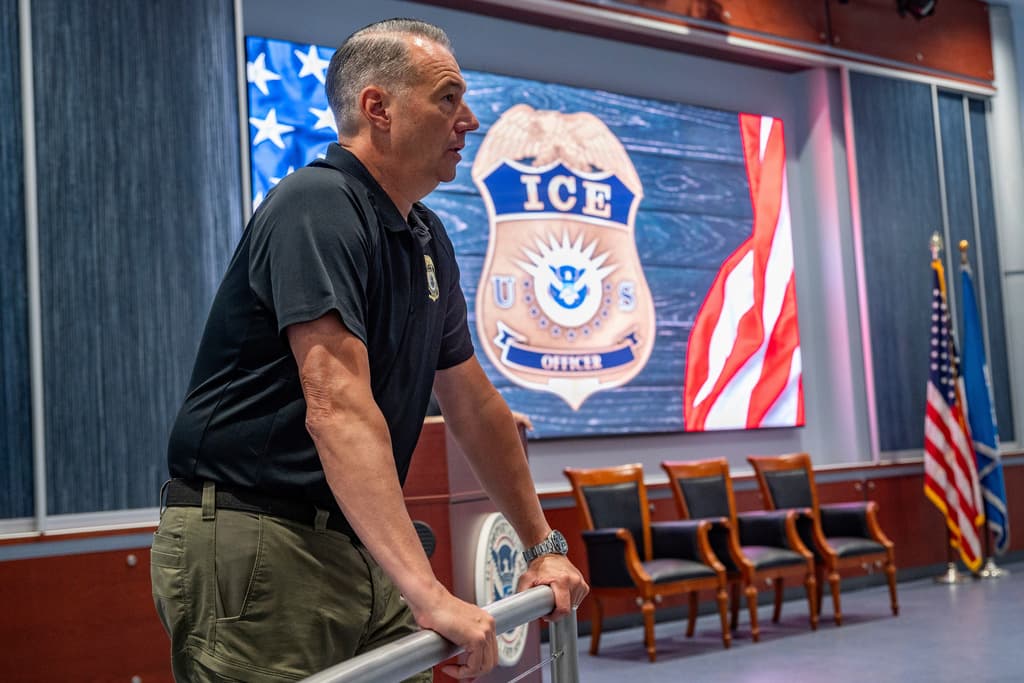
Take the case of Abraham Gonzalez-Romero.
Gonzalez-Romero’s initial criminal cases were shaky. State prosecutors had charged him with attempted murder with little evidence except that he was in possession of a firearm at a scene where shots were fired. The only witnesses to the case were also in the country without authorization and had credibility problems.
The local charges were eventually dismissed.
On Feb. 28, ICE agents were waiting for him as he left the jail, having been notified of his pending release by the Denver Sheriff after ICE asked about him. They flashed their badges and began walking towards him, he ran and was captured on jail video knocking an immigration agent to the ground.
ICE agents alleged that Gonzalez-Romero violently resisted arrest off-camera, too, even attempting to bite an ICE agent. He was charged under the federal statute for assaulting an officer. If anyone was injured, it was not serious enough to require immediate treatment. Denver Fire records don’t show any calls for service or medical assistance to the Smith Road location at that time.
But that didn’t stop his case from entering the national immigration debate.
Just a week later, House Republicans hosted a panel of big-city mayors, including Denver’s Mike Johnston, to talk about so-called sanctuary policies. Colorado Republican Rep. Jeff Crank told the story about Gonzalez-Romero, but he went a step further than even the ICE agent claimed.
“In Denver, you require that the Denver Police Department release Tren de Aragua gang members into the streets, uncuffed,” Crank said, animated as he addressed Johnston in the House hearing. “Just last week, it resulted in an illegal Tren de Aragua member assaulting and biting — and biting! — an ICE agent … You’re putting police officers at risk to score political points and it’s outrageous.”
But in court, federal prosecutors made no effort to prove Gonzalez-Romero bit, or even attempted to bite, an agent and his attorney said it never happened. Federal public defender Kelly Christl also said in court, “There’s no evidence to support that” he was a Tren de Aragua gang member. The U.S. Attorney didn’t present any evidence for that either.
The public defender for Gonzalez-Romero said that wasn’t the only thing that immigration agents got wrong: she told the court most of the violence an ICE supervisor said her client committed simply never happened.
“He did not kick the inside of the caged vehicle. He did not attempt to escape. He did not attempt to bite an officer. He did not tell officers that he wanted to fight them,” reads a court filing from August from Christl.
The government dropped the charge of assault on an officer as part of a plea deal in which Gonzalez-Romero pleaded guilty to “possession of a firearm by an illegal alien.” The U.S. Attorney said in court documents that the assault charge was dropped because of a lack of resources.
Gonzalez-Romero’s attorney quickly pounced on that.
“The government’s statement that this offer was made ‘due to available resources’ is without merit,” wrote Christl to the court, adding that the U.S. Attorney’s office certainly has the resources to prosecute hundreds of crimes every year.
“Furthermore, Attorney General Pam Bondi’s enforcement memorandum on February 5, 2025, specifically prioritizes prosecuting undocumented immigrants and obstruction of law enforcement. Certainly, if the government believed it could move forward on more serious offenses against Mr. Gonzalez-Romero, it would have, because he would otherwise fit the Attorney General’s enforcement priorities.”

Eve Sparks, a spokeswoman for Rep. Crank, said she wasn’t aware the assault against a federal officer charge was dropped, and she asked for proof. After the court documents were provided, she then didn’t respond to multiple requests for a comment or answer questions about where the congressman got the information about Gonzalez-Romero in the first place.
Gonzalez-Romero was sentenced in federal court to time served on the gun charge. The U.S. Attorney said he would be deported after being released.
The U.S. Attorney’s office would not comment on the decision to drop assault charges.
Other federal jobs more perilous, according to charges filed
While not backing up the enormous increases in assaults claimed by ICE and Homeland Security leaders, the federal data does make one thing clear: In Colorado, it’s far more dangerous to be an employee with the federal prisons or the Bureau of Indian Affairs than an ICE agent.
Between 2015 and June 2025, the majority of assaults on federal officers in Colorado were on Indian Country land and in the state’s federal prisons.
“My sense is the vast majority of members of the public understand that there is more physical resistance to law enforcement and assaults on law enforcement,” Suthers said. “It’s a much, much tougher job today than it was 20, 30 years ago and that is because of the public attitude that it’s OK to assault, resist and abuse officers.”
As for ICE assaults, Mechkowski, the former Deputy Field Office Director for ICE in New York, said federal prosecutors usually don’t pick up or aggressively pursue their cases.
“Most of the time, they’re just blanket denying these cases before they have all the facts. They'll just deny it unless there's serious, serious bodily injury,” Mechkowski said.
The importance of law enforcement credibility
In two of the four cases filed this year in Colorado's federal court against people for assaulting an immigration agent, a federal magistrate determined that the defendant did not pose a threat to the public and released them into the community to await trial.
On July 25, ICE agents said they were assaulted by Alejandro Guereca-Lizarraga while he was in custody on an immigration detainer. According to a criminal complaint filed in federal court, Guereca-Lizarraga kicked an ICE agent and spat on a detention officer at the GEO facility in Aurora.
Federal Magistrate Judge Kathryn Starnella denied the prosecutor’s request to delay a detention hearing and ordered ICE to put him in street clothes for release. Guereca-Lizarraga’s attorney told the court he’s currently being held in immigration detention in Aurora. He pleaded not guilty.
A few weeks later, on Aug. 12, ICE agents claimed they were assaulted by Nelson Monjarrez Mejia. No other details of the encounter are publicly known. A grand jury returned an indictment a month later for Mejia on the assault charge, but Starnella again denied the government’s request for a detention hearing.
Mejia pleaded not guilty, and the judge also released him from jail to await trial.
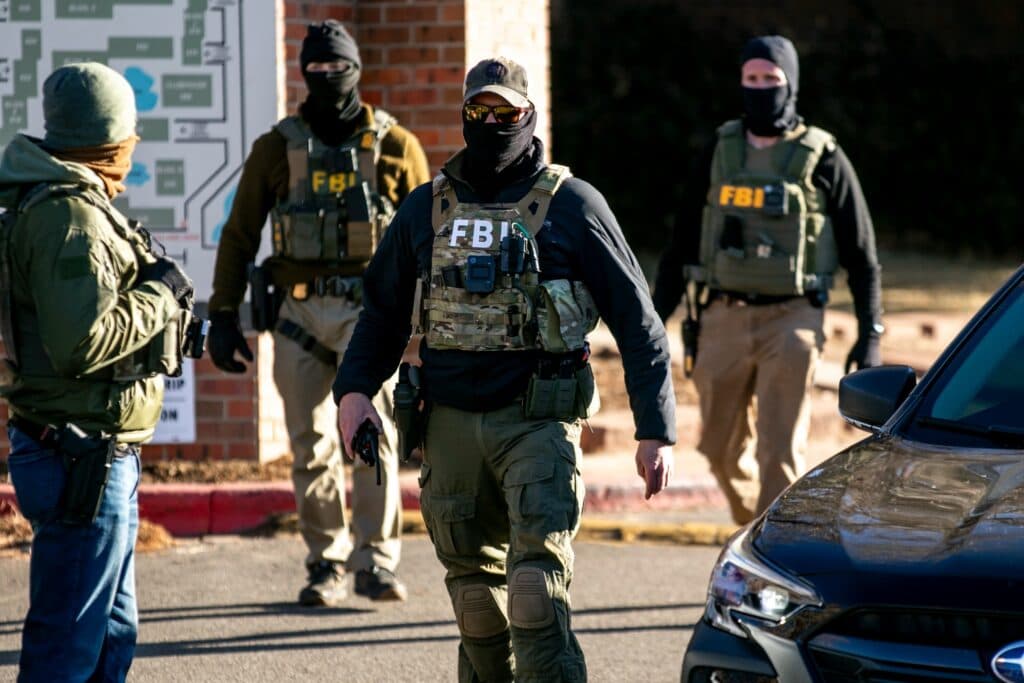
Denver immigration attorney Christine Hernandez said there is a credibility cost for federal law enforcement in exaggerating facts.
Just this year, she has represented people where judges ask for evidence on links to gang affiliations and other stated facts and the prosecutors can’t furnish it.
“We’ve never seen this before,” Hernandez said. “You don’t know what the government is going to say. A lot of times, they don’t have evidence, they don’t present evidence to back up the charging document. You’re supposed to have your evidence in place. That’s their job. And it’s not happening.”
Hernandez worries about the younger generation of Americans who are witnessing it all.
“We’re creating a whole generation of U.S. citizens who are watching their parents be mistreated in this administration,” she said. “And you’re creating a whole generation … U.S. citizens … of young people who don’t trust law enforcement and don’t respect law enforcement.”
- Mother and 7-year-old son from Salida return to Colorado after nearly a month in ICE detention in Texas
- Trump says he’s fulfilling his campaign promise on immigration crackdown. Tell us what you think so far
- Angry Democratic members of Congress get a planned tour of ICE detention facility, leave with questions
- Colorado, Denver named again as ‘sanctuary’ spots for unauthorized new arrivals, fight continues in court

